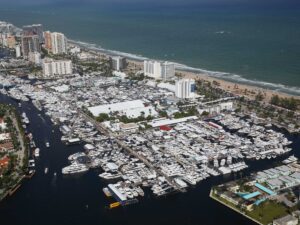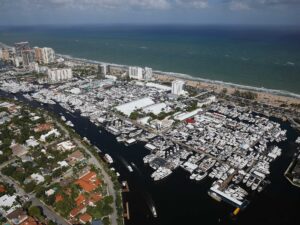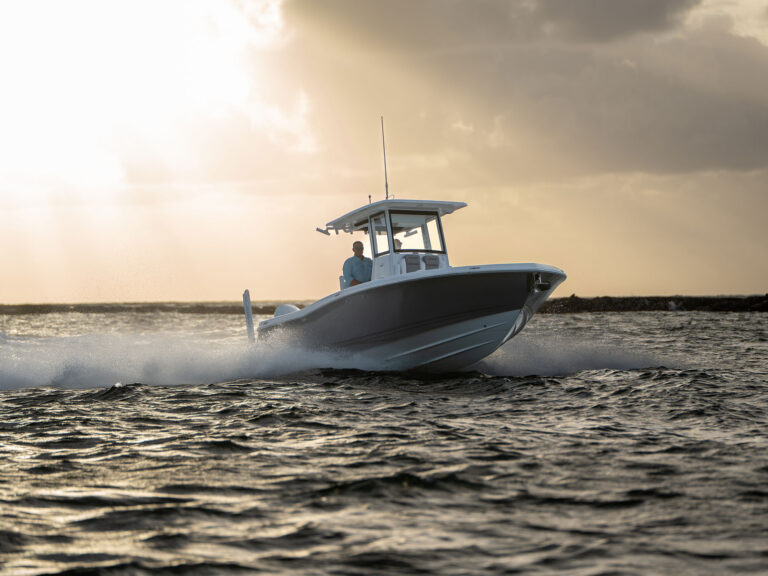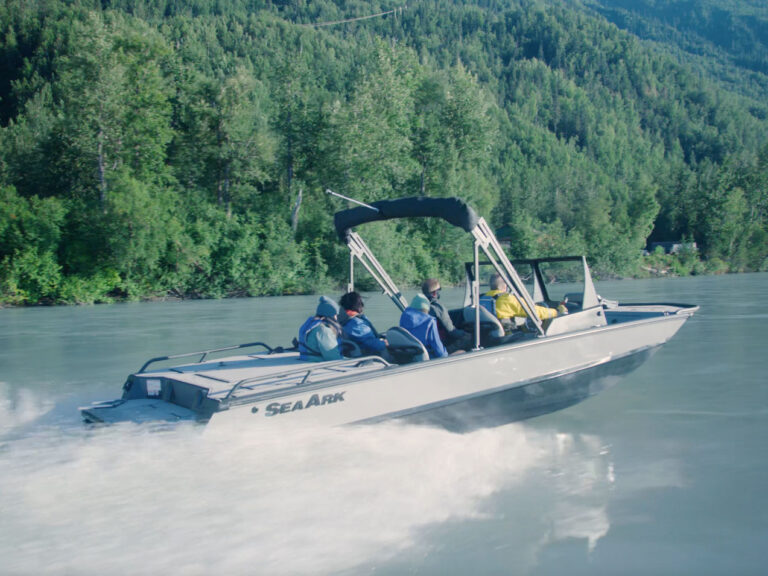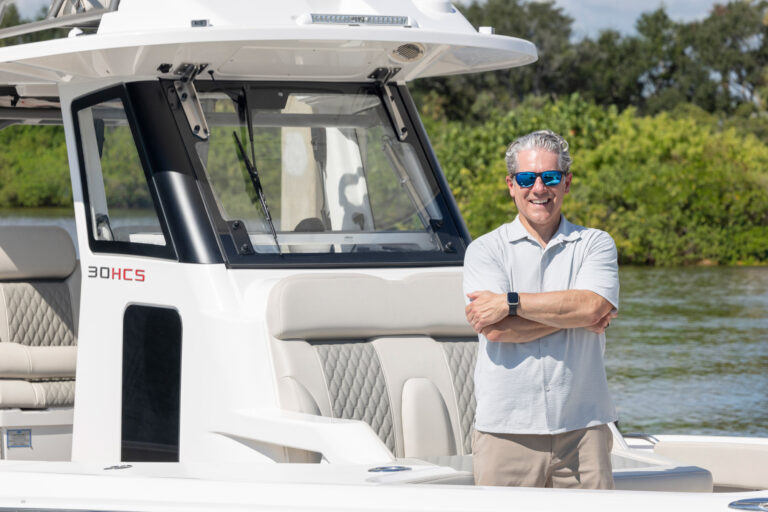
Most of us know the basics of trimming our outboard motors or sterndrives. Apply positive trim to raise the bow and make the boat go faster. Tuck things back in when the going gets rough. When it comes to using drive or outboard trim and tabs to get more speed out of your performance boat, there’s a little more to it.
Tabs Don’t Increase Speed
Virtually every performance boat has trim tabs. Lowering them improves your boat’s ride in rough seas because they force down the bow, keeping more running surface in the water. Raising them in calm water reduces drag, but using tabs doesn’t make your boat faster. In other words, if you put two identical models with the same power side by side, one wouldn’t be faster than the other because it was equipped with trim tabs and they were trimmed up. Actually, the added weight could slow the boat by a few miles per hour.
Aft, Not Up
Regardless of the hull design, a boat will run most efficiently when the prop thrust is directed straight aft as much as possible instead of up. On an outboard or sterndrive, this means trimming the drive so the front of the lower unit points forward. When the drive or motor is trimmed out, the front of the lower unit points down, and the propeller thrust is directed up. That reduces efficiency. When the propeller thrust is directed aft, it pushes the boat forward more efficiently. This thrust angle is relative to the running angle of the boat.
Mark Your Indicators
Most performance boats have mechanical trim indicators to show the position of the drives and tabs. Using a straight edge, set your tabs and drives to where they are even with the bottom of the boat. Mark this as neutral or zero on your indicators to give you a baseline.
Up and Down
When running in rough water in a boat equipped with twin or triple sterndrives and trim tabs, use the tabs to settle the ride and trim out the drives to go as fast as safely possible. Set the tabs to neutral/zero or just below to keep as much boat in the water as you can. Trim out the drives to try to get the boat running on top of the waves.
Trimming a Nonstepped Hull
When trying to go fast in a nonstepped hull in calm conditions, use whatever positive drive trim necessary to get as much boat out of the water to reduce the wetted surface area. This cuts down on drag. When turning, trim the drives in to set the boat in the water. Seasoned pros even lower the outside tab in a turn to help the boat lean into the maneuver. If you’re turning left, drop the starboard tab.
Trimming a Stepped Hull
Many have learned the hard way that stepped hulls are different. Because the running surface literally steps up as it runs fore to aft, the boat doesn’t need as much positive drive trim to run its fastest speed. A stepped V-bottom runs faster at a more level attitude because the steps aerate the bottom and prop thrust is directed aft. When turning, leave the drives and tabs trimmed out and pull back a little on the throttles to let the boat settle. Trimming in the drives forces the bow down, and the boat could spin out.
Size Chart
Mercury Racing made the original K-Plane trim tabs that set the standard for all other performance models. Here is Merc Racing’s size chart so you know what size tab you need for your boat.


